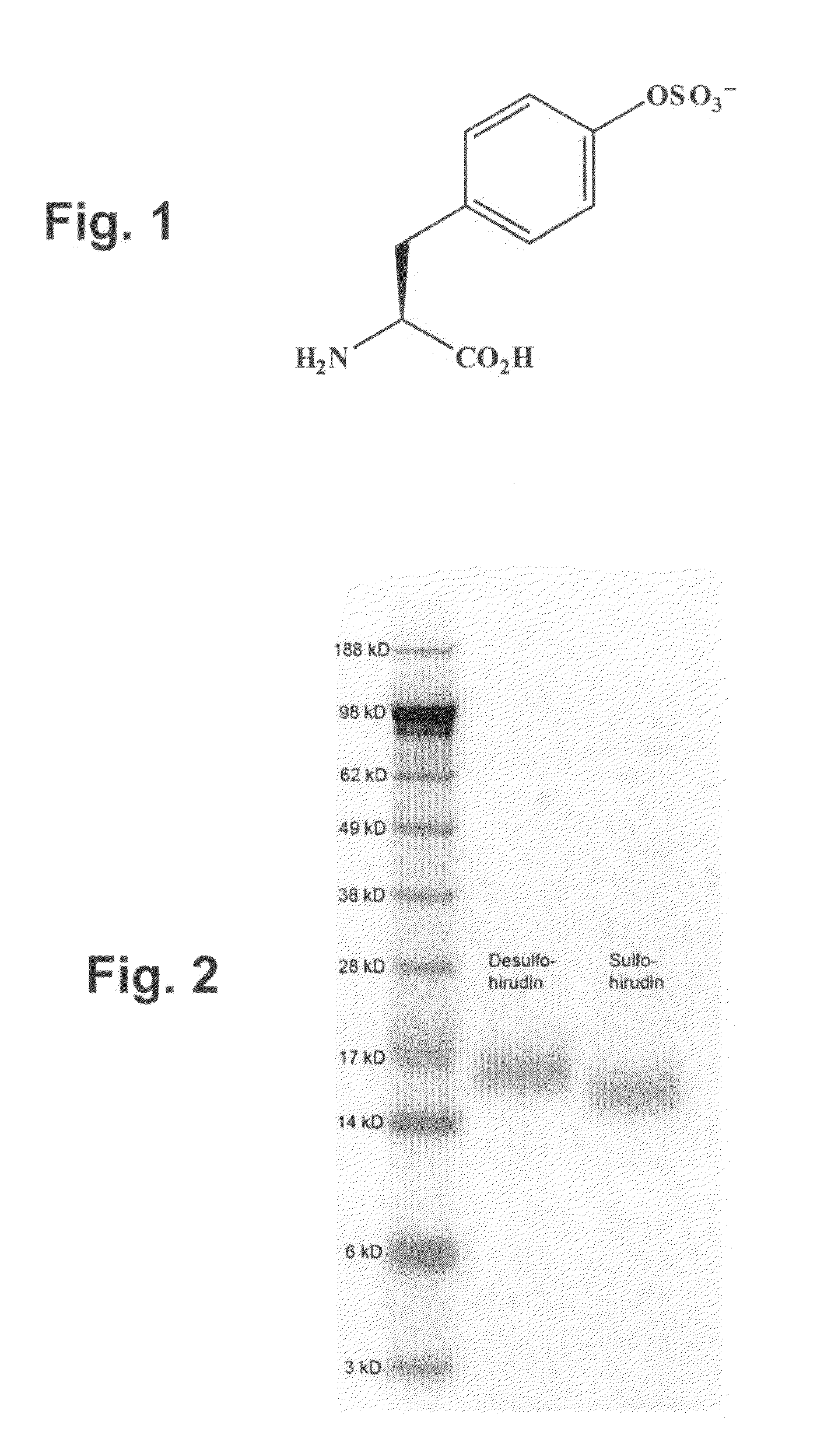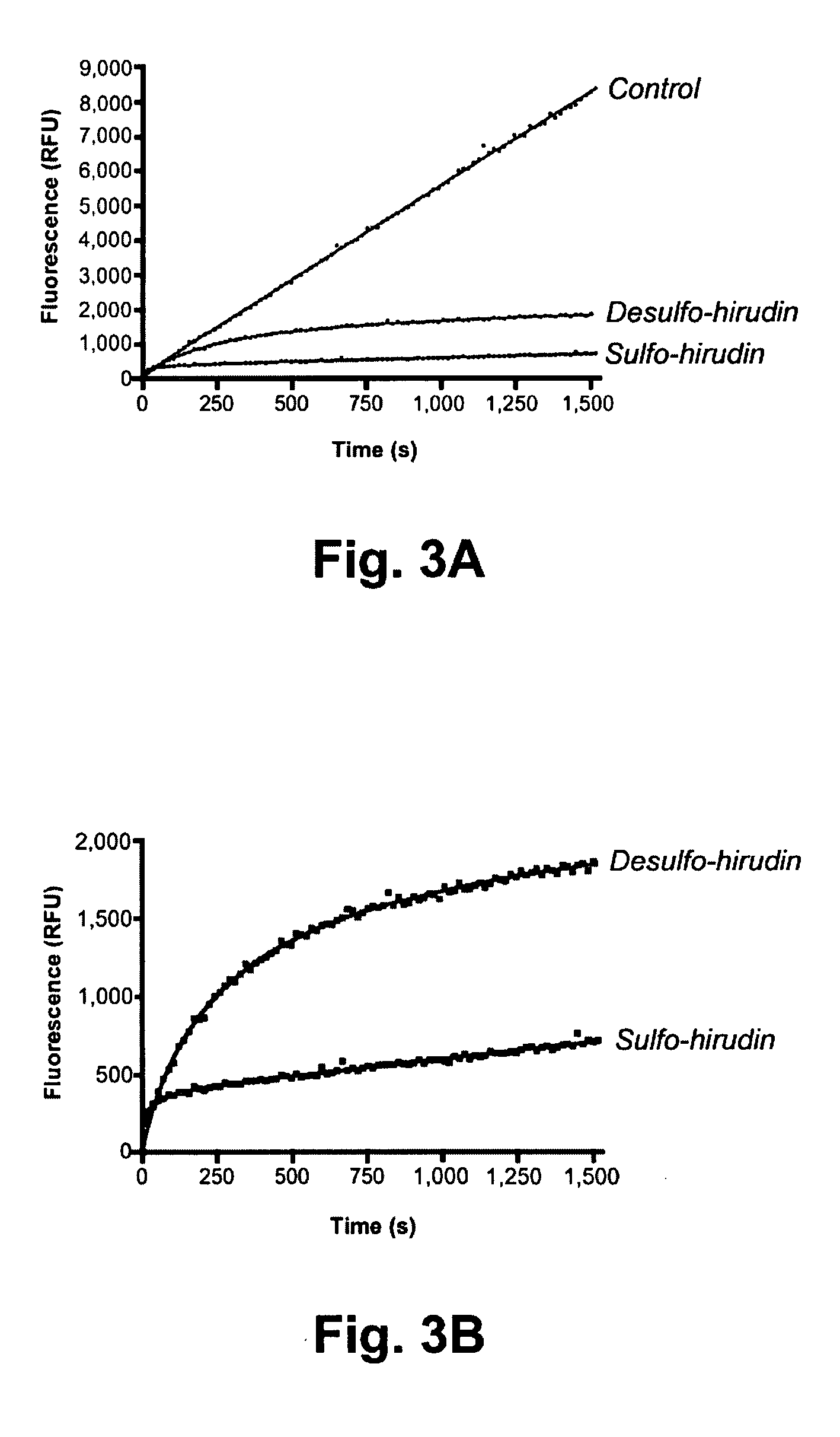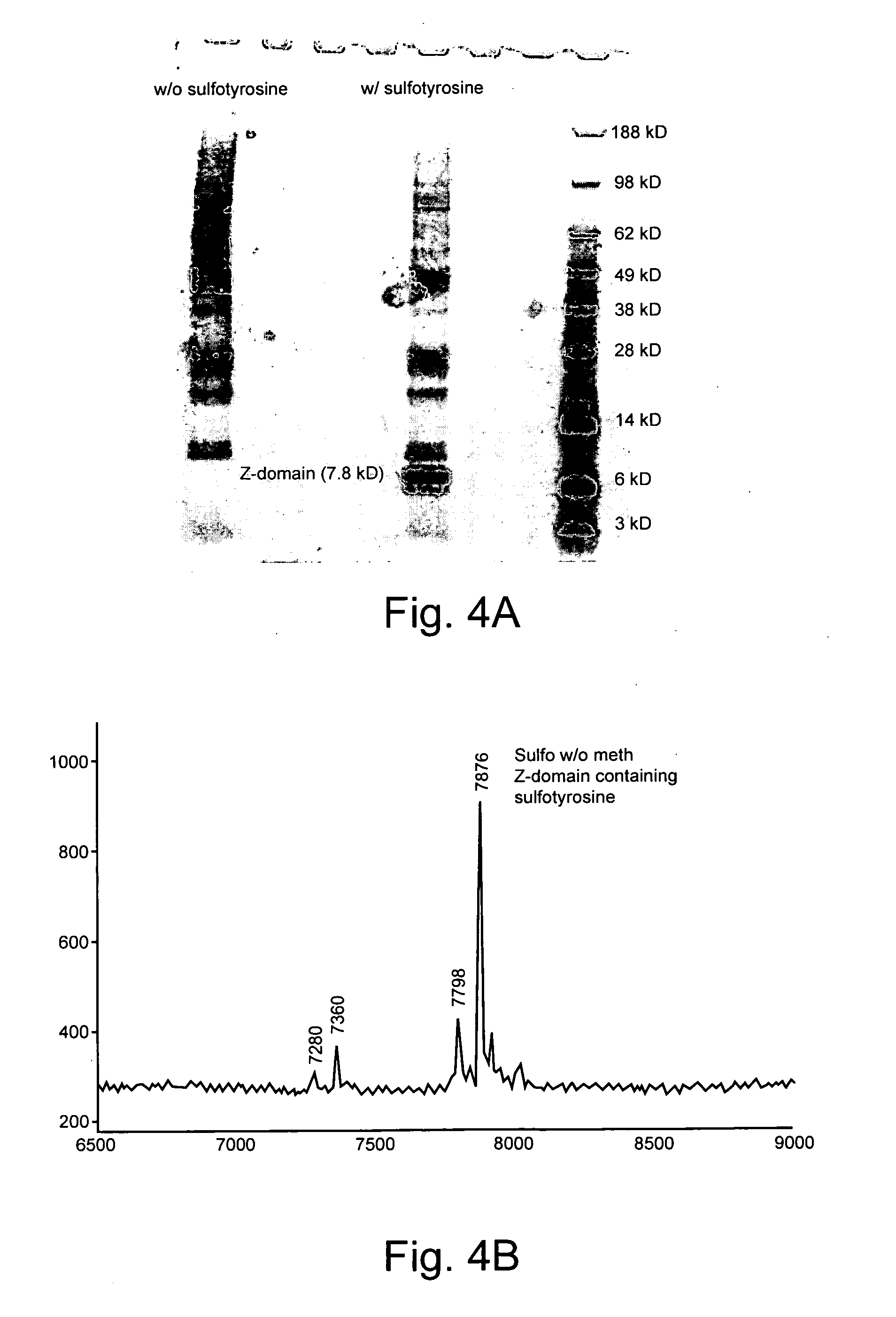Genetically programmed expression of selectively sulfated proteins in eubacteria
- Summary
- Abstract
- Description
- Claims
- Application Information
AI Technical Summary
Benefits of technology
Problems solved by technology
Method used
Image
Examples
example 1
Genetic Selection of Mutant Synthetases Specific for Sulfotyrosine
[0225]Methodologies that allow the systematic addition of unnatural amino acids to the genetic codes of E. coli (Wang et al., “Expanding the genetic code of Escherichia coli,” Science 292:498-500 (2001)), yeast (Chin et al., “An expanded eukaryotic genetic code,”Science 301:964-967 (2003)) and mammalian cells (Zhang et al., “Selective incorporation of 5-hydroxytryptophan into proteins in mammalian cells,”Proc Natl Acad Sci USA 101:8882-8887 (2004)) have been previously reported. Such methods are based on the evolution of a nonsense suppressor tRNA / aaRS pair that has the property of orthogonality, defined as the ability to selectively incorporate a given amino acid in response to a unique codon without cross-reacting with endogenous host tRNAs, aminoacyl-tRNA synthetases, or amino acids.
[0226]To generate an orthogonal tRNA / aaRS pair that uniquely inserts sulfotyrosine (FIG. 1), a library of active site mutants of the M...
example 2
Expression and Characterization of a Mutant Model Protein Containing Sulfotyrosine
[0232]To verify unique incorporation of sulfotyrosine by the selected synthetase STyrRS, an amber mutant (residue 7) of a C-terminal His6 tag Z-domain protein was expressed in E. coli harboring plasmids for the amber mutant Z-domain, MjtRNATyrCUA, and STyrRS (clone 1). Polyacrylamide gel electrophoresis (PAGE) analysis after Ni-NTA purification showed a strong band for Z-domain only when protein was expressed in media containing 2 mM sulfotyrosine—no band was observed in the absence of sulfotyrosine, confirming the dependence of amber suppression on sulfotyrosine (FIG. 4A).
[0233]For further characterization, MALDI-TOF analysis was performed on the purified mutant Z-domain. It should be noted that MALDI-TOF and ESI analyses of tyrosine-sulfated proteins result in partial loss of sulfate, the extent of which depends on the severity of the conditions (22, 23). Therefore, mild positive-ion mode conditions ...
example 3
Expression of a Sulfated Model Protein (Hirudin) Derived from a Higher Organism
[0234]Whether this orthogonal system for the production of sulfated proteins could be used to generate a selectively sulfated native protein normally biosynthesized only in higher organisms was examined. For this, we chose the protein hirudin, which is sulfated at tyrosine position 63. Hirudin, secreted by the medicinal leech Hirudo medicinalis, is the most potent natural inhibitor of thrombin, and its recombinant form is clinically administered as an anticoagulant. However, recombinant expression of hirudin in E. coli and yeast used for commercial production of the drug yields the non-sulfated form (desulfo-hirudin) due to the lack of requisite sulfotransferases in those organisms (Markwardt, “Hirudin as alternative anticoagulant—a historical review,”Semin Thromb Hemost 28, 405-414 (2002)). Although desulfo-hirudin is still an effective thrombin inhibitor, its affinity for human thrombin is at least an o...
PUM
| Property | Measurement | Unit |
|---|---|---|
| Fraction | aaaaa | aaaaa |
Abstract
Description
Claims
Application Information
 Login to View More
Login to View More - R&D
- Intellectual Property
- Life Sciences
- Materials
- Tech Scout
- Unparalleled Data Quality
- Higher Quality Content
- 60% Fewer Hallucinations
Browse by: Latest US Patents, China's latest patents, Technical Efficacy Thesaurus, Application Domain, Technology Topic, Popular Technical Reports.
© 2025 PatSnap. All rights reserved.Legal|Privacy policy|Modern Slavery Act Transparency Statement|Sitemap|About US| Contact US: help@patsnap.com



